The Framework Desktop is a powerful and highly customizable mini PC that’s equally well-suited for work, gaming and local AI workloads. But we are talking about Framework, so it's much more than that.
Just like with Framework’s laptops, it’s incredibly easy to build and repair thanks to its replaceable parts. However, unlike with other mini PCs, it’s also very customizable since you can use the company’s Expansion Cards to configure its front ports to your liking and its magnetic front panel can be personalized using a number of different swappable tiles.
The only components you can’t swap out are its AMD Ryzen AI Max processor and LPDDR5x memory, which is soldered to the motherboard due to this chip’s limitations. You do get to pick from three CPU and memory configurations when putting together your Framework Desktop though. Likewise, you can either pay extra for storage and the computer’s operating system at checkout or you can bring your own to save a bit of cash.
My Framework Desktop review will help you decide if this is the best mini PC for your needs and workflow or if you’d be better off with something smaller, cheaper and less customizable. For me though, this computer is the small form factor desktop I’ve always wanted. Here’s why.
Framework Desktop: Cheat Sheet
- What is it? A mini PC or small form factor desktop computer with powerful internals that’s highly customizable and you build yourself.
- Who is it for? PC hobbyists, gamers and AI developers that want a lot of power in a small yet customizable form factor.
- What does it cost? The Framework desktop starts at $1,099 and goes up to $1,999 depending on the processor and RAM you choose. Keep in mind though, you will need to pay extra for a CPU fan, storage, Expansion Cards, tiles for the front panel and a Windows license.
- What do we like? It’s unique form factor, how portable it is, the well-designed case, the various customization and expansion options and its powerful AMD Ryzen AI Max processor.
- What don’t we like? That the RAM isn’t upgradeable due to limitations with AMD’s Ryzen AI Max chips and how the higher-end configurations can get expensive, especially when you need to buy storage and a Windows license separately.
Framework Desktop: Specs
Swipe to scroll horizontally
Price | $1,099 | 1,599 | $1,999 |
CPU | AMD Ryzen AI Max 385 | AMD Ryzen AI Max+ 395 | AMD Ryzen AI Max+ 395 |
GPU | Radeon 8050S | Radeon 8060S | Radeon 8060S |
NPU | Up to 50 TOPS | Up to 50 TOPS | Up to 50 TOPS |
RAM | 32GB LPDDR5x | 64GB LPDDR5x | 128GB LPDDR5x |
Storage | 2 x M.2 SSD from 500GB to 8TB | 2 x M.2 SSD from 500GB to 8TB | 2 x M.2 SSD from 500GB to 8TB |
Ports | 2 x Expansion Cards (Front), 2 x USB-A, 2 x USB-C, 1 x HDMI 2.1, 2 x DisplayPort 2.1, 1 x 5 GbE Ethernet (rear) | 2 x Expansion Cards (Front), 2 x USB-A, 2 x USB-C, 1 x HDMI 2.1, 2 x DisplayPort 2.1, 1 x 5 GbE Ethernet (rear) | 2 x Expansion Cards (Front), 2 x USB-A, 2 x USB-C, 1 x HDMI 2.1, 2 x DisplayPort 2.1, 1 x 5 GbE Ethernet (rear) |
Connectivity | Bluetooth 5.4, Wi-Fi 7 | Bluetooth 5.4, Wi-Fi 7 | Bluetooth 5.4, Wi-Fi 7 |
OS | Windows, Linux | Windows, Linux | Windows, Linux |
Size | 3.81 × 8.09 × 8.9 inches | 3.81 × 8.09 × 8.9 inches | 3.81 × 8.09 × 8.9 inches |
Weight | 6.83 pounds (3.1kg) | 6.83 pounds (3.1kg) | 6.83 pounds (3.1kg) |
Framework Desktop: The ups
The Framework Desktop builds on the company’s experience with customizable and easily repairable laptops but in a mini PC form factor. Everything about this mini PC from its unique case and customization options, to the fact that you have to build it yourself make it stand on its own. However, it’s the extra power under the hood from that AMD Ryzen AI Max processor that makes the Framework Desktop such a versatile desktop or laptop replacement.
PC building simplified
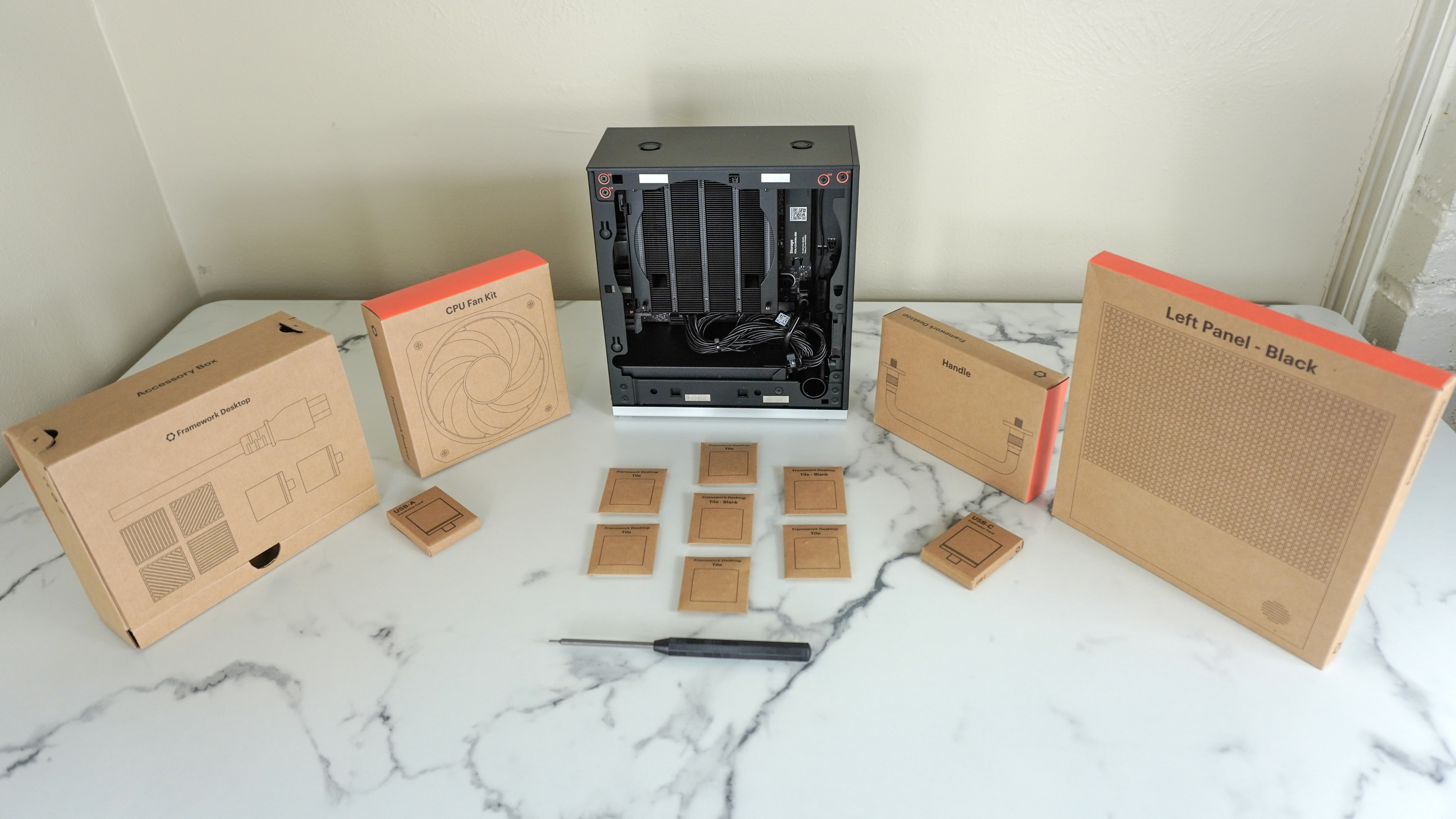
If you’ve ever built a PC before, you’re in for a familiar but much simpler experience with the Framework Desktop. This is because its motherboard, CPU, RAM and power supply come pre-installed. In fact, you don’t even have to plug in any cables either.
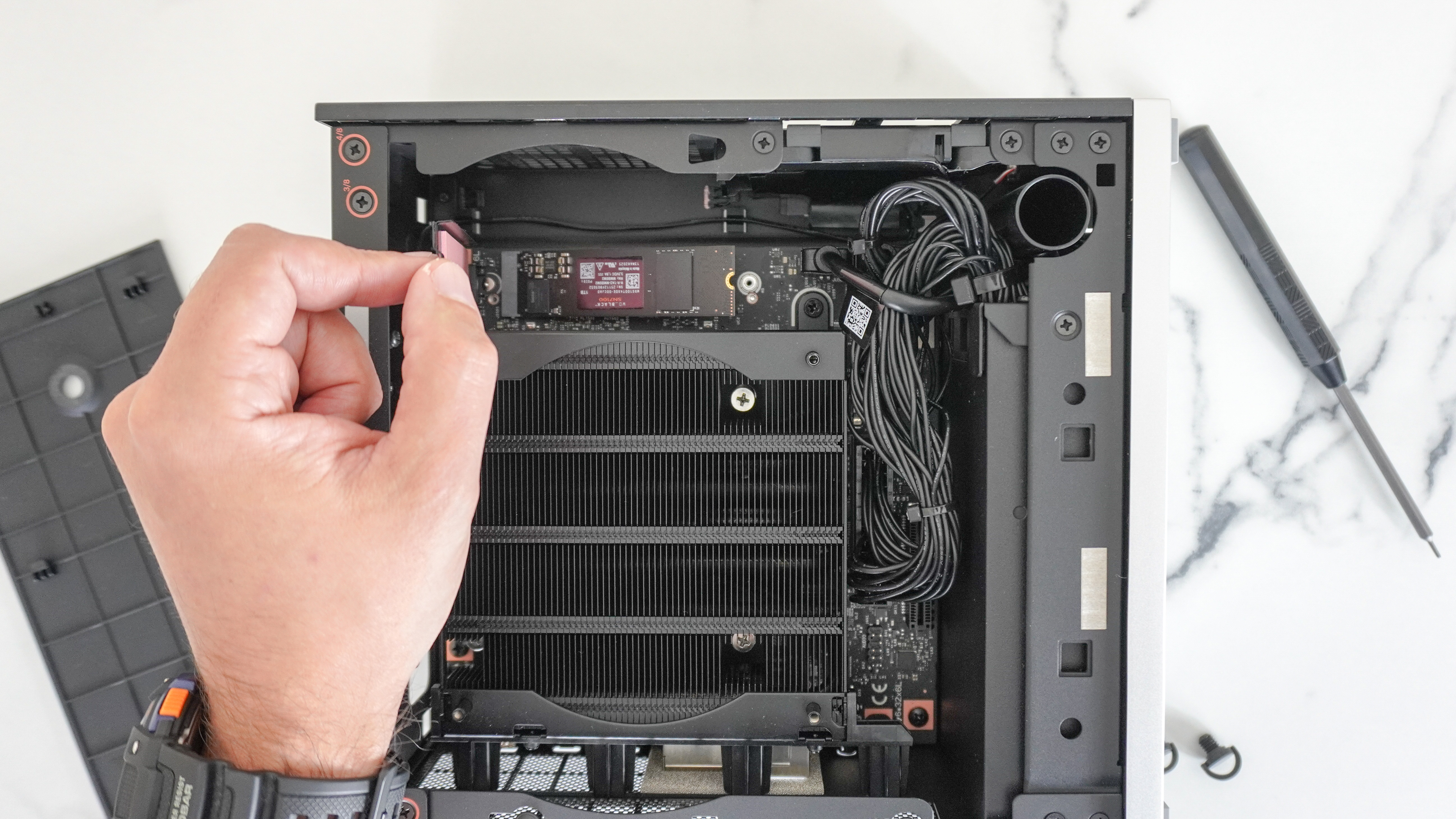
Putting the Framework Desktop together starts with opening its case. From there, you need to install your M.2 SSD and the CPU fan before closing everything up and loading either Windows or Linux onto your new PC.
In total, it took me around 15 minutes to put everything together, though I did stop and take pictures and videos along the way. I found the whole process to be quite refreshing compared to building a traditional PC where simple mistakes can not only be time consuming but also quite expensive.
I did have to download Windows 11 and install the operating system from scratch but this way, you don’t have to worry about any of the bloatware you find on other pre-built PCs or laptops.
Custom look, custom ports
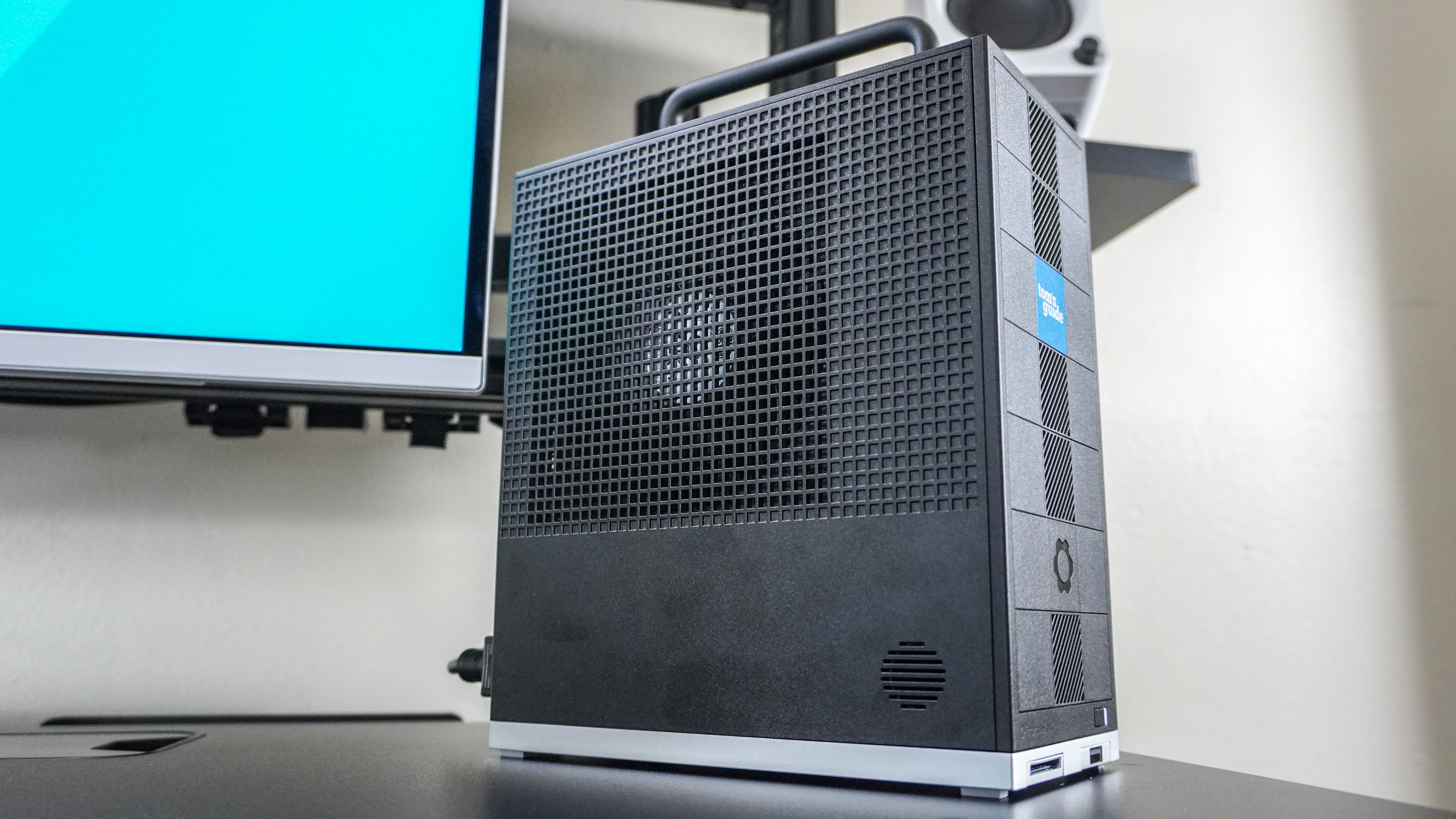
When configuring your Framework Desktop, the parts you pick can give this mini PC quite a different look once everything’s put together.
For instance, I went with a sleek, all-black design with more of a business-focused look to it. However, I could have easily chose a CPU fan with RGB lighting and a translucent side panel for something that looks more like one of the best gaming PCs than a sleeper build.
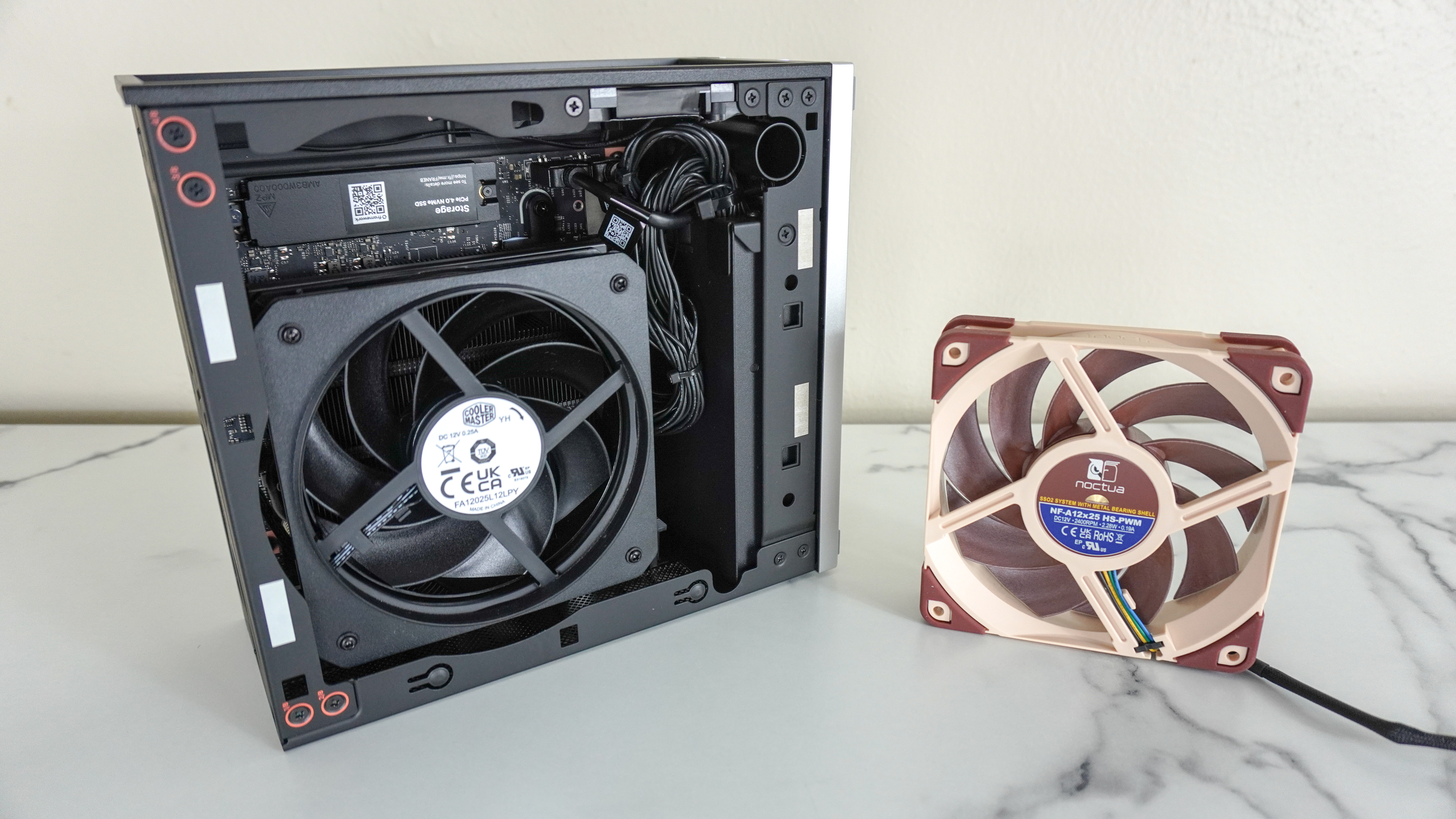
At the time of writing, there are actually three CPU fan options to choose from but you can also get a fan mounting kit and use your own fan instead. Given the all-black look I was going for, I went with the Cooler Master Mobius 120 fan, though Framework also sent over one for Noctua for me to check out as well. Given that the Framework Desktop’s side panel slides right off, swapping out one fan for another later on would be quite easy to do.
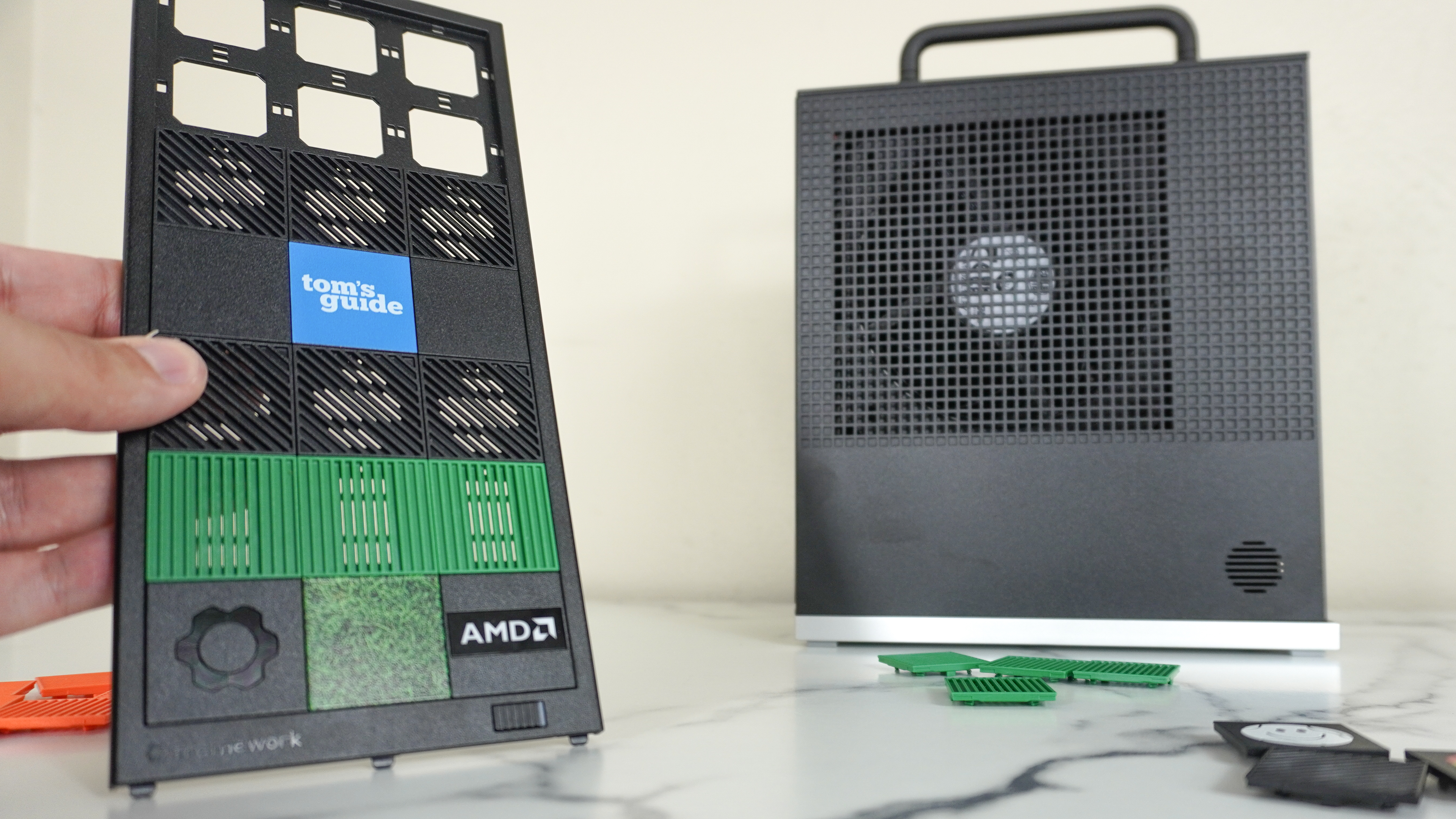
What excited me most about the Framework Desktop when it was first announced was its customizable front panel. It has 21 slots for plastic tiles that you can easily snap in with your thumb. You can mix and match colors, or choose tiles with logos like Framework or AMD. Framework even sent one with the Tom’s Guide logo, and I expect more custom options will come as the system grows.
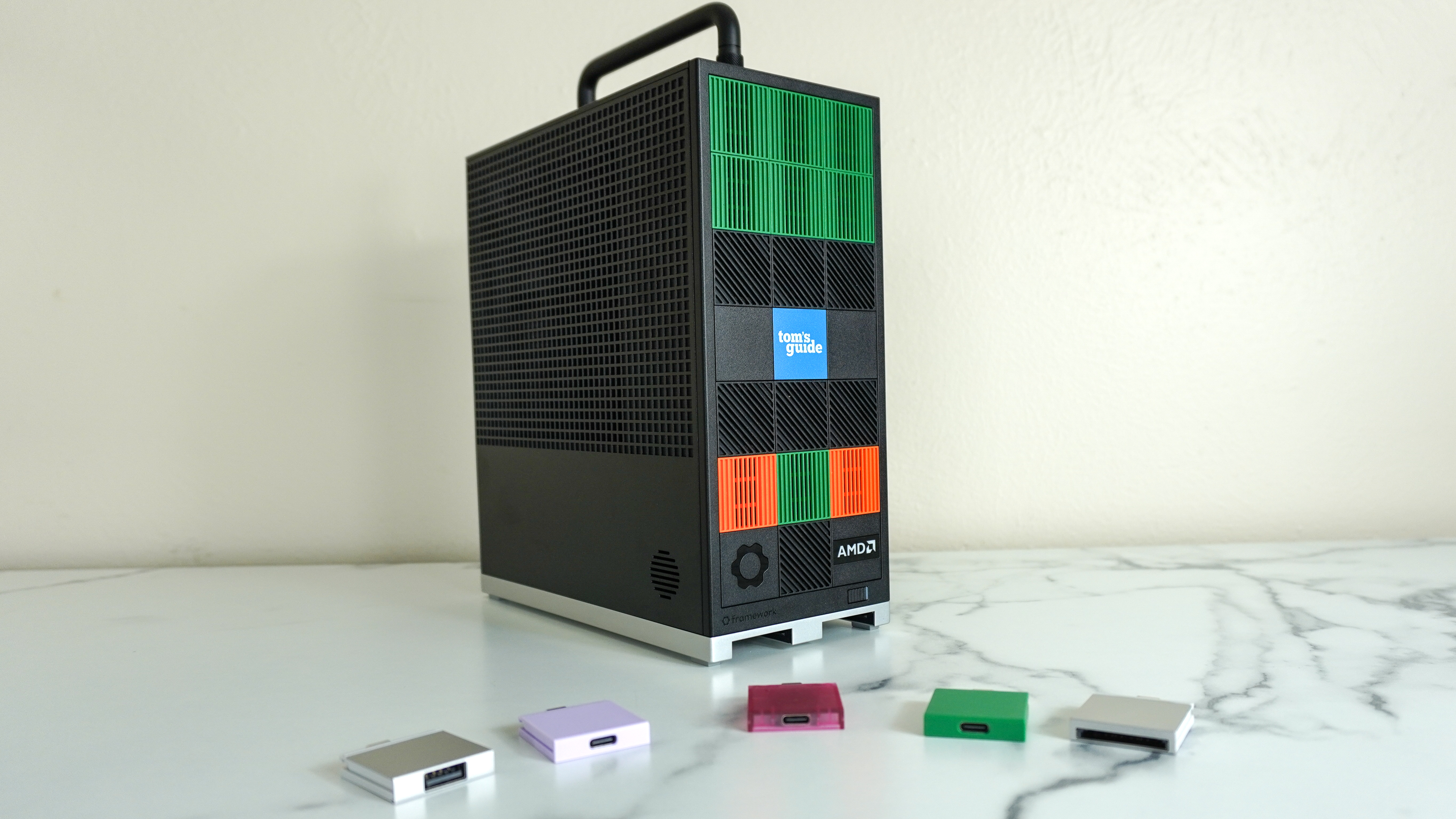
Behind the front panel, there are two open slots for Framework’s Expansion Cards, which let you choose what ports you want on the front of the mini PC. These cards come in different colors and finishes to match the look of your setup. For my review unit, I chose a USB-A and an SD card reader, but I also really liked the translucent pink USB-C card.
Small, mighty and portable
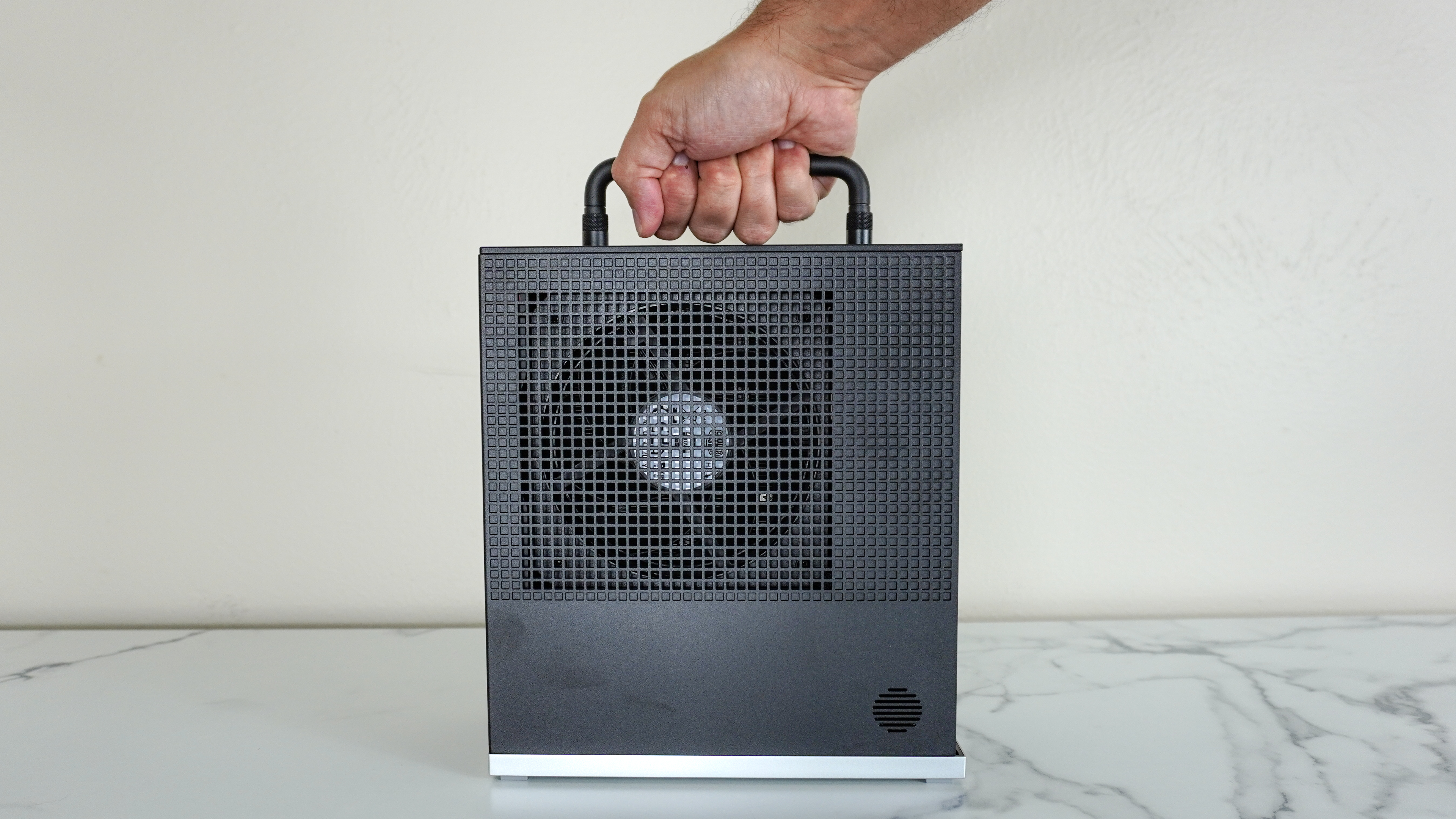
At 3.81 × 8.09 × 8.9 inches, the Framework Desktop is definitely on the large size for a mini PC. I’d say it straddles the line between a more cube-shaped mini PC like the Geekom A6 and a true small form factor desktop PC case due to its size. Still, it’s small enough to slip into a backpack and the optional carrying handle makes it very easy to move this computer from one room to another.
Even though it’s compact, the Framework Desktop is powerful thanks to its Ryzen AI Max chip. There are two CPU options — one with 8 cores and 32 graphics cores, and another with 16 cores and 40 graphics cores. You can also choose between 32GB, 64GB, or 128GB of memory.
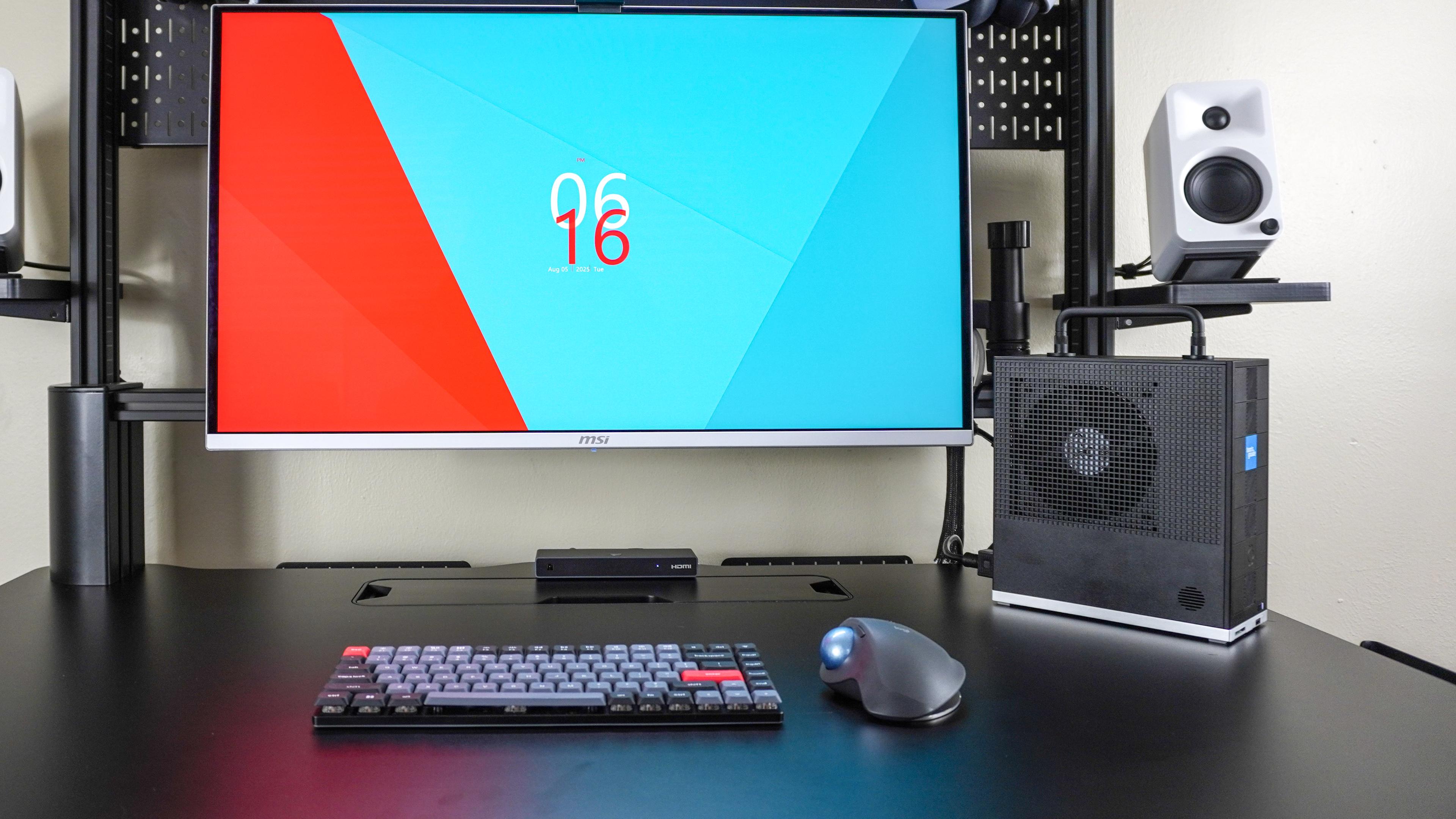
I tested the mid-range setup with an AMD Ryzen AI Max+ 395, 64GB of RAM, and a 1TB SSD. With 16 cores and 32 threads, it was more than I needed for my usual tasks, which mostly involve running several Chrome windows with lots of tabs and doing some photo editing in GIMP.
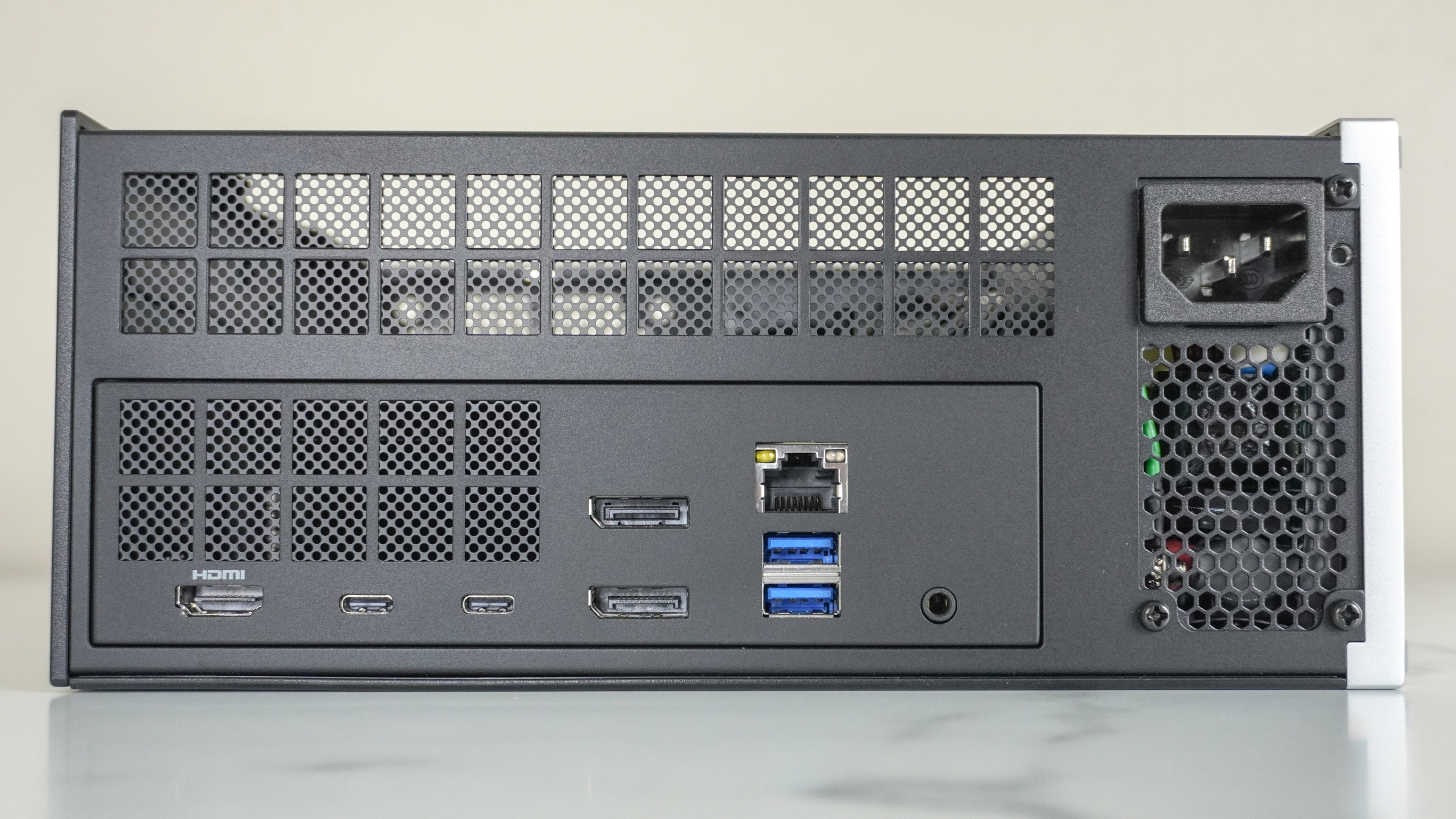
Although there aren’t any extra Expansion Card slots around back, you still get a nice selection of rear ports which include two USB-A, two USB 4, an HDMI 2.1 port, dual DisplayPort 2.1 connections, a 5 GbE Ethernet port and a headphone jack.
While I wish there were a few more USB-A ports for my older devices, one thing I really appreciate about the Framework Desktop is that as it has an internal power supply, you can use a standard PC power cable. Of the mini PCs I’ve tested only the Mac mini M4 has an internal power supply while the rest use bulkier external ones.
Swipe to scroll horizontally
Geekbench 6.4 single-core | 2966 | 2864 | 2712 |
Geekbench 6.4 multi-core | 17574 | 15651 | 8740 |
25GB file copy test (MBps) | 2976.46 | 1445.75 | 1337.70 |
Handbrake (Mins:Secs) | 2:43 | 3:50 | 9:24 |
I’d say the base version of the Framework Desktop will be more than enough for most people but you could upgrade to the version with 64GB of RAM for future proofing or for playing games (more on that later). Meanwhile, the 128GB version of this mini PC is best suited for those that want to run AI models like Llama locally.
Another thing that really surprised me about the Framework Desktop was just how fast my download speeds were when using it with one of the best Wi-Fi 7 routers. It comes equipped with both Wi-Fi 7 and a 5 GbE Ethernet port for fast wireless and wired connectivity.
For instance, when running a speed test over Wi-Fi, I saw download speeds of 1.52 gigabits per second (Gbps). Then when I plugged it into my Eero Max 7 mesh router using an Ethernet cable, I was able to take almost full advantage of the bandwidth offered by my 10 gigabit fiber connection. All in all, the Framework Desktop delivers and then some both on the performance and the connectivity front.
Not just for work
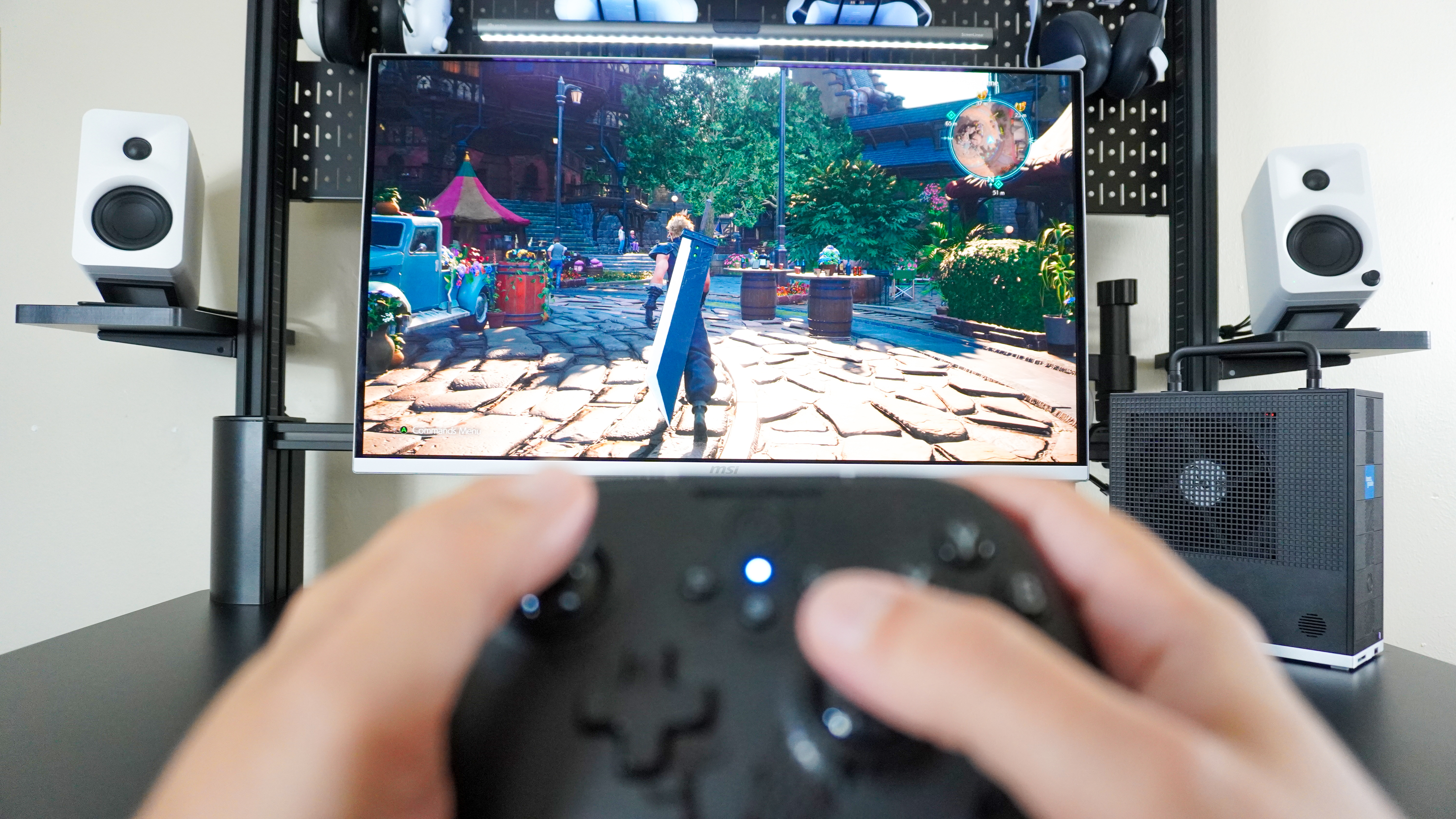
As I mentioned before, the Framework Desktop is a very versatile mini PC and as such, it can be whatever kind of computer you need it to be at the moment. While I spent a lot of time using it as a work machine during the day, at night, it effortlessly transformed into a gaming PC.
Based on the gaming benchmarks ran in our testing lab, you’d think that the Framework Desktop is best suited for 1080p or even 1440p gaming. However, in my testing on the MSI MPG 321URXW QD-OLED 4K gaming monitor at home, I walked away quite impressed after playing several more demanding PC games like Final Fantasy 7 Rebirth and Ratchet & Clank: Rift Apart.
Swipe to scroll horizontally
Assassin’s Creed Mirage | 85 | 103 | 97 |
Metro Exodus | 56.56 | 91.63 | 91.78 |
Cyberpunk 2077 | 22.09 | 39.90 | 39.33 |
Red Dead Redemption 2 | 56.57 | 73 | 62.94 |
While the latest entry in the FF7 remake series doesn’t support AMD’s FSR tech, I still managed to get a smooth frame rate of 60 fps when I enabled Radeon Super Resolution in the pre-installed AMD Software: Adrenaline Edition app. The same was true in Ratchet & Clank: Rift Apart which does come with support for FSR 3.1
Obviously upscaling and frame-gen tech aren’t for everyone and in that case, you’ll get excellent results at 1440p and especially at 1080p with it turned off on the Framework Desktop. Still, being able to play newer and more demanding titles in 4K using an integrated GPU is quite impressive. Likewise, with two USB 4 ports around back, you could always plug in an external graphics card too.
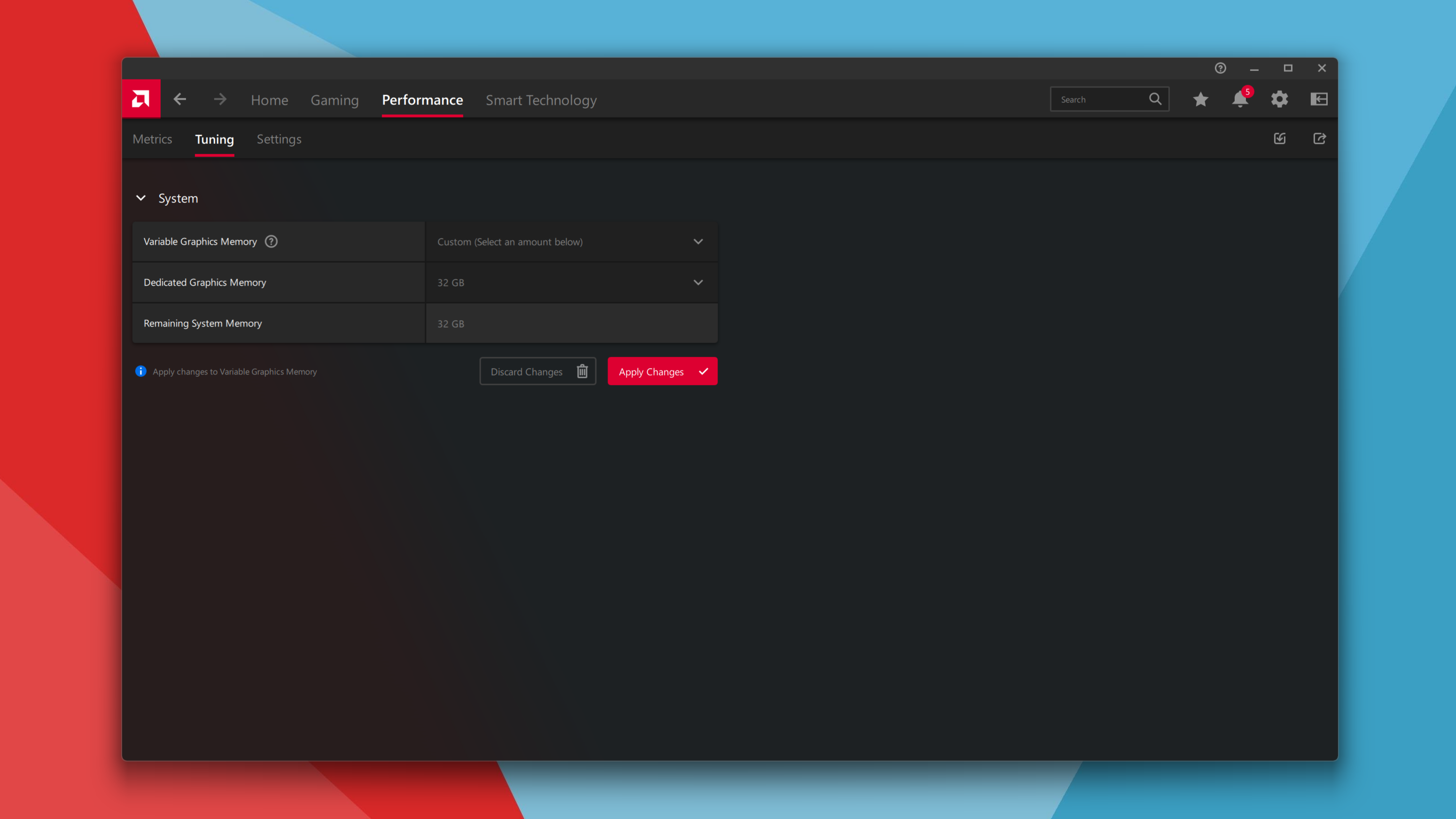
It’s also worth noting that if you opt for a Framework Desktop with more memory, you can allocate extra RAM to this mini PC’s Ryzen AI Max chip for improved graphics performance. For instance, in AMD’s app, I was able to split my review unit’s memory in half with 32GB going to the system and the other 32GB going to its graphics.
Framework Desktop: The downs
The Framework Desktop is an impressive debut into the world of mini PCs by a company known for its repairable and upgradeable laptops. However, it does have its downsides too which include this PC’s higher price as you are buying into an ecosystem after all and the fact that you can’t upgrade its RAM or processor.
Not quite a barebones build
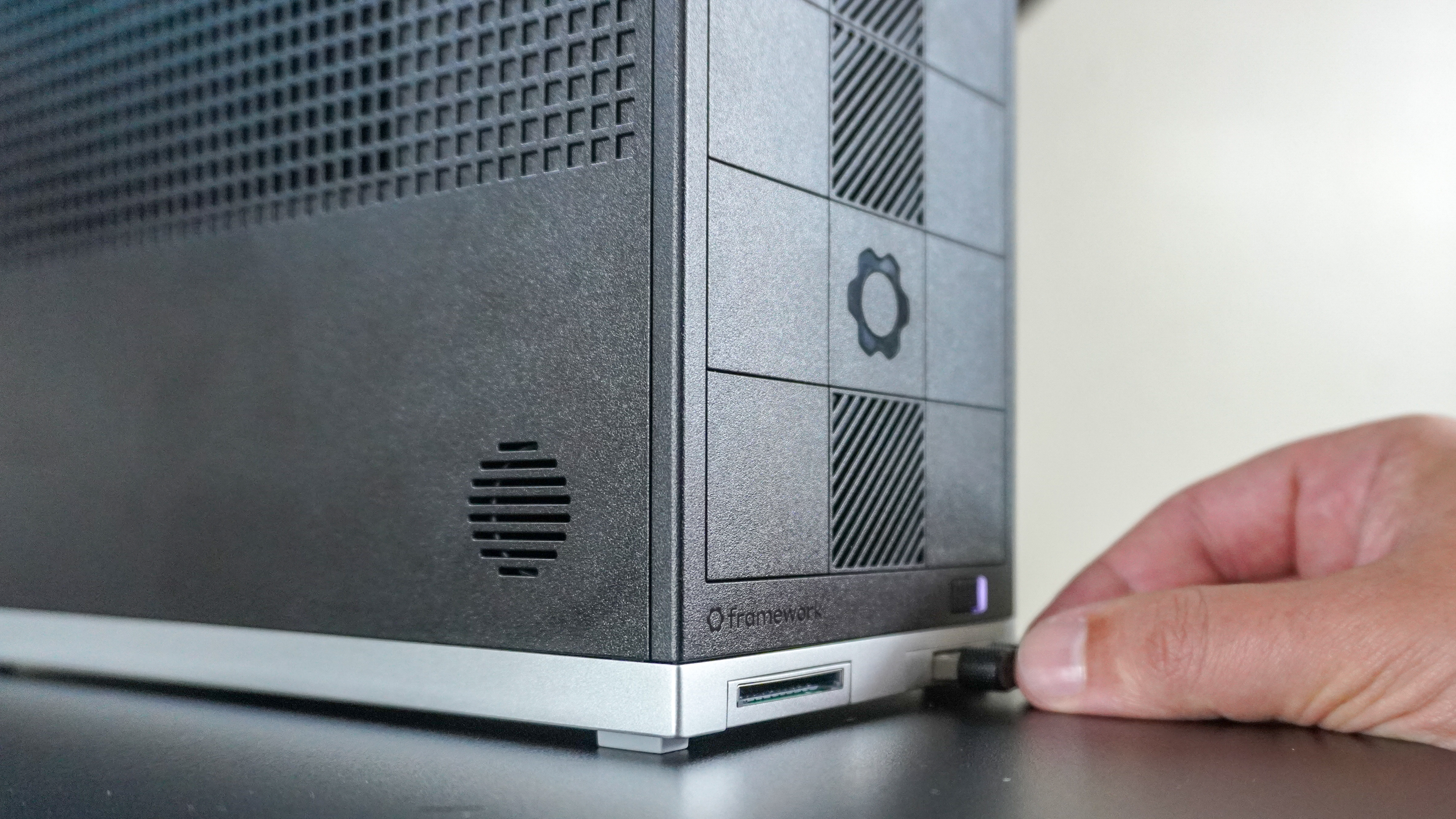
The Framework Desktop makes building a PC easier, but it’s not as flexible as a true barebones setup. You only get two CPU options and a few RAM configurations. The Ryzen AI Max is a strong processor, so it makes sense for Framework’s first desktop — but the downside is that the RAM is soldered in and can’t be upgraded later if your needs change.
You also don’t save much money compared to other pre-built PCs, since the price doesn’t include a CPU fan, storage, Expansion Cards, or a Windows license if you don’t want to use Linux.
Overall, I really like the Framework Desktop and have had a wonderful experience building and using it for the past two weeks. Your money could go further with a full-size desktop PC especially when you factor in sales on components.
However, that would defeat the purpose of the Framework Desktop. At the same time, as someone who has built small form factor PCs in the past, you’re always going to pay a premium for smaller parts like mini ITX motherboards, SFX or SFX-L power supplies and of course, low-profile graphics cards.
As such, if you’re thinking about buying your own Framework Desktop, then you’re definitely going to want to think long and hard about your needs and workflow before committing to a specific configuration. While the base configuration will likely meet the needs of most people, opting for the middle of the road one like my review unit or even the fully equipped configuration if you have the budget for it might make more sense for futureproofing.
Framework Desktop: Verdict
The Framework Desktop stands out from typical mini PCs, and that’s one of its biggest strengths. Instead of a fully pre-built design, it lets you customize the look and features with its tiled front panel and Expansion Cards. You can also choose different side panels and CPU fans — or even use your own — making it a much more personal and flexible experience than most other mini PCs.
While the soldered RAM and being limited to two variations of one processor might not be for everyone, this decision is what allows the Framework Desktop to be readily mass produced instead of a more niche, boutique-style mini PC. Likewise, some PC gamers might scoff at the idea of gaming on an integrated GPU but the Ryzen AI Max’s Radeon 8050S or 8060S graphics get the job done while allowing you to play a wide variety of both newer and older games.
The Framework Desktop could be a new way forward for mini PCs as well as small form factor desktop overall. Only time will tell but so far, it has rightfully earned its place among the best mini PCs you can get today.
.png)


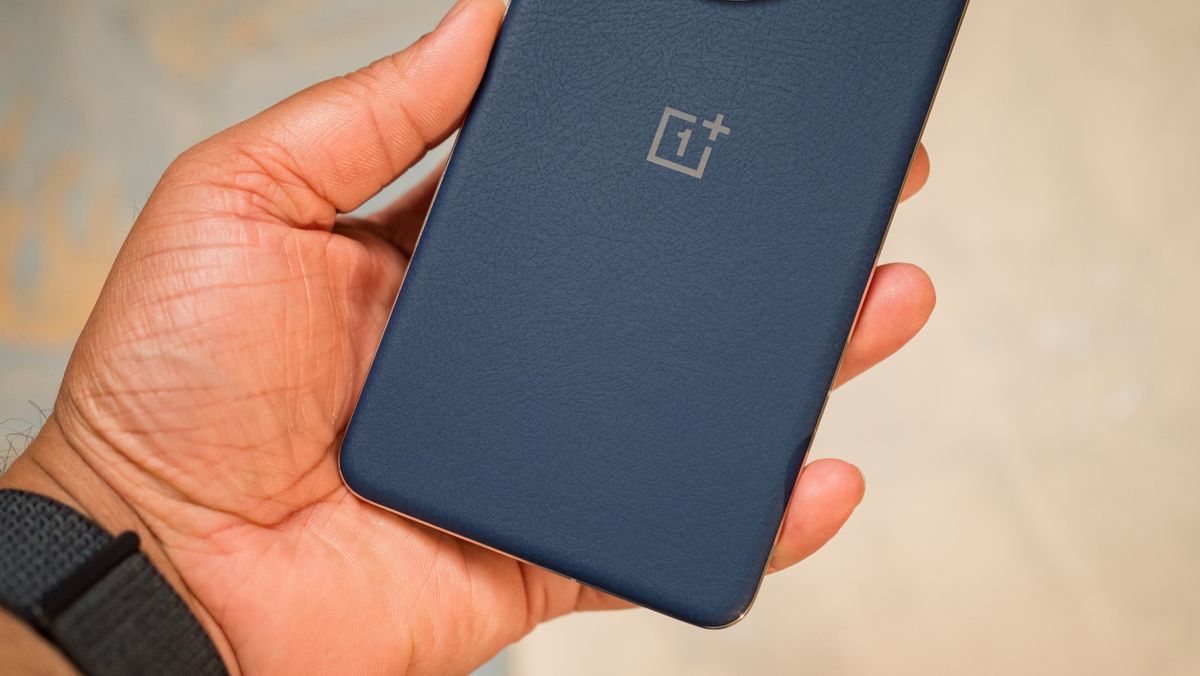








 English (US) ·
English (US) ·